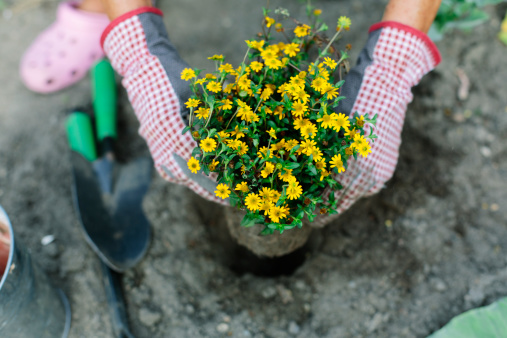
Find nontoxic solutions to your biggest yard woes—for free!—in your pantry. Horticulture expert Melinda Myers shares a few of her top tricks.
White Vinegar to Get Rid of Weeds
A vinegar spray will burn plants but won’t attack the roots, so expect to do repeat applications on weeds that resprout.
Dishwashing Liquid to Banish Mites and Aphids
These tiny pests feed on shrubs, fruits, flowers, and vegetables—basically everything. Mix a few drops of dish soap with water and spray on plants.
Coffee Grounds to Enrich Sandy Soil
The residue from your morning brew will add organic matter and nutrients to sandy soil and increase water capacity. The grounds also improve drainage in clay soil.
Beer to Slay Slugs
Pour beer into a shallow dish and sink it into the ground. The slugs will be attracted to the fermenting yeast. “I’d like to believe they die happy,” says Myers.
Baking Soda to Control Powdery Mildew
Add 1 tablespoon of baking soda and 1 to 3 teaspoons of horticultural oil to 1 gallon of water. Spray both sides of affected leaves once a week.
Paper-Towel Tube and Drinking Straws to Trap Earwigs
Fill the cardboard core with large-diameter straws and place it under a plant where you see earwig damage. The earwigs will crawl into the straws. Grab the tube and cover the ends with your hands. Hold it over a bucket of soapy water and shake the earwigs into the bucket.
Cayenne Pepper to Repel Wildlife
You can ward off ground squirrels (and moles, gophers, and even deer) by sprinkling a heavy-handed dusting of cayenne pepper directly onto plants you don’t want them snacking on.
Hollowed-Out Citrus Shell to Lure Snails and Slugs Away
Snails and slugs love nothing more than a dark, cozy place devoid of sunlight. Any container that creates such an environment—like an upside-down citrus shell—makes an attractive hideout. Once snails or slugs inch their way inside, relocate them before nightfall, when they’d normally crawl out.
Eggshells to Stop Blossom-End Rot
A lack of calcium is to blame for this blight on the bottoms of tomatoes. Because crushed eggshells are a source of calcium, adding them to the soil can help keep your tomatoes healthy.
This article originally appeared on This Old House.
More from This Old House:
Read next: 8 Landscaping Tips That Can Save You Money
More Must-Reads from TIME
- Why Biden Dropped Out
- Ukraine’s Plan to Survive Trump
- The Rise of a New Kind of Parenting Guru
- The Chaos and Commotion of the RNC in Photos
- Why We All Have a Stake in Twisters’ Success
- 8 Eating Habits That Actually Improve Your Sleep
- Welcome to the Noah Lyles Olympics
- Get Our Paris Olympics Newsletter in Your Inbox
Contact us at letters@time.com